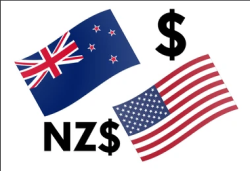
Flexity Analysis for NZDUSD
Forecast Overall(Short-Term, Long-Term): ST=Probably Down LT=Probably Down
Forecast Methods(Short-Term, Long-Term):
[Method0] ST=Up LT=Up
[Method1] ST=Down LT=Down
[Method2] ST=Down LT=Down
FlexityIndicator Analysis Method(0)
Short-Term: The price of NZD/USD is expected to go up in the short term based on the provided information. The one-year forecast predicts a significant increase from 0.565296 to 0.65709, which represents a 16.24% rise. While there are both bearish and bullish factors influencing market volatility, the overall prediction leans towards an upward trend. Long-Term: Based on the analysis of the provided information: - **Price Predictions**: The weighted average forecast is 0.64. Without knowing the current NZDUSD rate, it's challenging to determine if this represents an increase or decrease from current levels. - **Market Factors**: - **ECB Policy**: Could impact Euro strength and thus NZDUSD. - **Bitcoin**: Risk sentiment might influence NZD value. - **Tesla Performance**: Affects broader market sentiment, potentially impacting NZD. - **Copper Prices**: Higher prices could strengthen NZD. - **Australian Rates**: May indirectly affect NZD through regional economic ties. - **Conclusion**: The forecasts suggest a possible stabilization or slight appreciation if current rates are below 0.64. However, due to the influence of various factors and market volatility, it's cautious to predict without knowing the current rate. **Final Answer**: The forecast suggests potential stabilization or slight appreciation around 0.64, contingent on current market conditions and further developments.
Result: [Method0] ST=Up LT=Up
FlexityIndicator Analysis Method(1)
Short-Term: Based on the analysis of the provided information, the expected trend for NZD/USD in the short term is **down**. **Reasoning:** - Multiple forecasts (Barclays, UOB Analyst, Lloyds) suggest a bearish outlook or limited upward movement with specific price targets below current levels. - Market factors such as a stronger US dollar against commodity currencies and weakness in NZD contribute to this downward expectation. - The broader context, including ECB rate cuts and trade tensions, further supports the likelihood of a decline. Long-Term: Based on the analysis of the provided context, here's a breakdown: ### **Key Takeaways:** 1. **Barclays (March 20 & 21, 2018):** - Sold NZDUSD due to US dollar strength against commodity currencies. This suggests a bearish outlook on NZD relative to USD. 2. **Lloyds Bank (April 20, 2018):** - Forecasted NZD/USD targeting **0.71**, which is below the current long-term price level of around **0.65** in 2023. This indicates a bearish outlook. 3. **UOB Analysts (April 20, 2018):** - Predicted NZD/USD would remain range-bound, but given the broader market context and other forecasts, this likely implies stability at lower levels rather than significant appreciation. 4. **ANZ Bank (April 20, 2018):** - No specific forecast for NZD/USD, but their broader outlook on the New Zealand dollar suggests caution due to global trade tensions and economic uncertainty. 5. **Market Dynamics:** - The US dollar's strength as a safe-haven asset during periods of economic uncertainty (e.g., trade wars) is likely to weigh on NZD/USD. - Global risk sentiment and inflation dynamics (e.g., cooling Canadian inflation, potential trade deals) could indirectly impact NZD/USD. ### **Conclusion:** The overall tone of the forecasts and market analysis suggests a **bearish outlook** for NZD/USD in the long term. The repeated recommendations to sell NZDUSD and the specific price target of **0.71** from Lloyds Bank indicate that the New Zealand dollar is expected to weaken against the US dollar over time. ### **Final Answer:** The price for NZDUSD is **expected to go down** in the long term, based on the forecasts and market conditions outlined in the context.
Result: [Method1] ST=Down LT=Down
FlexityIndicator Analysis Method(2)
Short-Term: The price for NZDUSD is expected to **go down** in the short term. This conclusion is based on the anticipation of a bearish trend driven by U.S. dollar strength and potential further rate cuts by the Reserve Bank of New Zealand, despite a slight upward movement noted after recent data. Long-Term: **Analysis Conclusion:** The price of NZDUSD is expected to **go down** in the long term. This expectation is driven by market sentiment anticipating further monetary easing (rate cuts) by the New Zealand central bank, despite higher inflation data. Lower interest rates tend to weaken a currency, leading to depreciation against the USD. Therefore, the anticipation of additional rate cuts suggests that NZD will likely decrease in value over the long term.
Result: [Method2] ST=Down LT=Down
